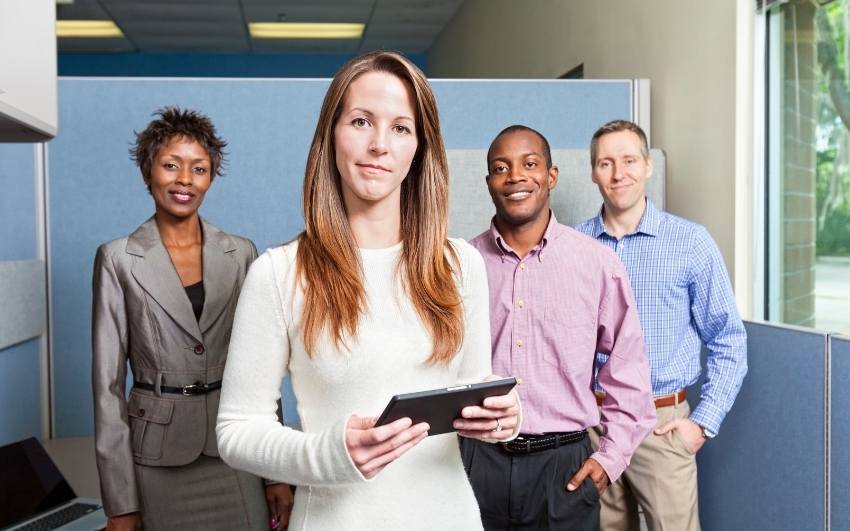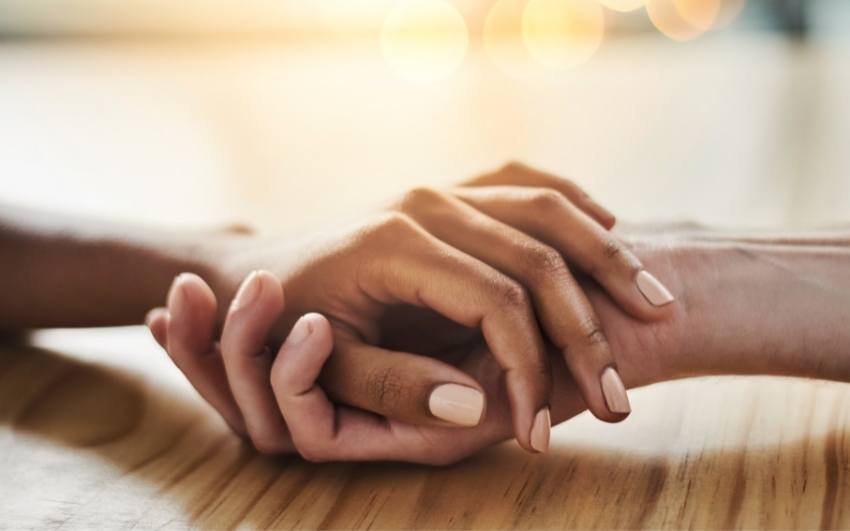On this page

13 Random Acts of Kindness Statistics
In a world that seems to be filled with violence and hatred, it’s nice to know that there are still people who care about others and are willing to help out in any way they can.
Random acts of kindness (RAOK) can be anything from paying for someone’s coffee to helping a stranger carry their groceries.
No act is too small, and when it comes to random acts of kindness “everything counts”.
We’ve gathered some statistics on random acts of kindness to show just how much good there is in the world.
The most popular acts of kindness were helping someone with yard work or housework, giving blood, and donating food.
Key Random Acts of Kindness Statistics

In a world where some people believe in Darwin’s law of the survival of the fittest, the weak ones are usually not able to survive. Kindness is one of the virtues that help us to be strong, not only for our own good but also for the good of others. There are different acts of kindness that we can do each day. Whether it is a simple act like smiling at someone or something more significant like volunteering at a soup kitchen, these acts can make a big difference in the lives of others.
Here are some statistics on random acts of kindness:
- Studies have shown that performing acts of kindness can lead to an increase in happiness and a decrease in stress levels.
- In 2017, a study found that 58% of Americans had performed a random act of kindness in the past month.
- Even though most individuals who completed the survey said that kindness levels had either remained constant (39%) or decreased (36%) throughout their lives, two-thirds of respondents thought that the pandemic made people nicer.
- Women were more inclined to report all aspects of kindness (seeing, receiving, and being kind) in the study.
- Concerns about kindness being misunderstood (65.9%), not having enough time (57.5%), social media usage (52.3%), a lack of opportunity (42.1%), or kindness is seen as a vulnerability (27.6%) were the most frequent obstacles to compassion, according to on respondents’ answers to the 2018 Kindness Research Report Card.
- Widespread reports of being kind had no relationship with income. People were also asked to consider if they had discovered a windfall of £ 850 and how much they would give away. The people with the lowest incomes and the people with the highest incomes said they would offer up the least.
- People who were older, female, and religious said they gave more money and time to charity.
- Almost half of UK respondents (46%) stated that they donated to charity most frequently through UNICEF, followed by causes benefiting people in their own country (32%), causes benefiting people in other nations (30%), and environmental protection programs.
- According to The Kindness Test, three-quarters of individuals experience kindness from close friends or family frequently or almost all the time.
- One-quarter of people said they had done something kind for someone within the last hour. 43% of those polled received an act of kindness the previous day.
- People who scored highly on extroversion, openness, and agreeableness in terms of personality said they gave and received more compassion.
- People who said they were religious scored somewhat higher than the average on giving and receiving compassion.
- In the study, individuals who valued charity and universalism, in general, were found to be more compassionate on average than those who prioritized success and power.
13 Incredible Random Acts of Kindness Statistics

1. 43% of those polled received an act of kindness the previous day.
In a recent poll, 43% of respondents reported receiving random acts of kindness the previous day. This statistic is encouraging, suggesting that kindness is still commonplace in our society. However, the poll also revealed that most acts of kindness are relatively small in scale. For example, 36% of respondents said someone had held the door open for them, while only 4% said someone had helped them with a major problem. This indicates that we could all do more to be kinder to those around us. Whether it’s offering to help carry someone’s groceries or simply taking the time to listen to a friend in need, every act of kindness makes a difference.
2. According to a new poll, small acts of kindness made a huge difference in 2021.
There are several reasons why I wrote this book. One is that it’s been an excruciatingly difficult year in ways beyond anyone’s comprehension.
But there’s some great news: OptionB.org conducted a study and discovered that Americans helped one another throughout this trying year with a constant succession of thoughtful gestures. And the majority of respondents said they’re feeling more prepared than ever to face whatever comes next at the end of the year.
They found:
- They agreed to complete tasks such as calling, texting, sending a care package, or assisting with errands to assist people who relied on less than 80% of their support.
- Around 70% of respondents indicated that they provided more of these types of assistance to others in 2013 than they had in previous years.
- This is a good time to express your gratitude for your support, especially if it’s been offered in ways you didn’t expect. Last year, around 80% of respondents said they received help from others this year, and many people said the generosity came from folks they didn’t suspect would reach out.
- A recent survey of 2,000 adults found that around 70% of respondents indicated that they provided more assistance to others in 2013 than they had in previous years. The most common type of assistance was helping someone with a personal problem, such as illness or relationship difficulties. Other forms of assistance included providing transportation, helping with child care, and running errands. The survey also found that people were more likely to assist friends and family members than strangers. When asked why they had decided to provide more help to others, the most common response was that it made them feel good to be able to help someone in need. Other reasons included wanting to repay a favour, feeling obligated to help, and feeling closer to the person after helping them. It is often said that we are all busy and don’t have time for others in today’s world. However, this survey shows that there are still many people who are willing to go out of their way to lend a helping hand.
- In a recent survey, 30% of respondents said that receiving regular texts or calls from friends and family helps them feel less lonely. This finding suggests that social supports play an important role in loneliness prevention. Although FaceTime and other video streaming services provide a way to see loved ones’ faces, they may not be as effective at reducing loneliness as more traditional forms of communication. The survey also found that 42% of respondents said they sometimes feel lonely, even when people surround them. This highlights the importance of regular contact with loved ones, even for those who are generally outgoing and social. For those feeling lonely, a simple text or call from a friend can make all the difference.
- According to the American Cancer Society’s study, 60% of respondents said that simply having someone acknowledge their difficulties or validate their feelings helped the most.
3. Teachers and parents are concerned that children aren’t receiving enough kindness.
According to a poll conducted by Sesame Workshop, 86% of teachers and 70% of parents are concerned that the world is unpleasant for children daily.
4. Teachers want more time to focus on social and emotional learning.
According to this poll of 1,000+ educators and parents, 65 per cent of teachers believe that they do not have enough time to teach SEL skills.
5. There is still a lot of work to encourage young people to care for others.
According to the Harvard Graduate School of Education’s Making Caring Common Project, 80 percent of children surveyed ranked happiness or high achievement most important. In contrast, only 20% said caring for others was essential. Parents claim that developing caring children is a priority, but 80 percent of children in this survey feel that parents are more concerned with academic success or happiness than care for others.
6. Kindness makes you happy.
Surprisingly, kindness and happiness are directly related: being kind to others benefits both the receiver and the giver. Being kind has been shown in studies to make people happier. Kindness must be exercised daily to realize its advantages.
7. Kindness fosters acceptance and happiness among peers.
Kindness has the potential to improve other areas of a child’s life. According to this study, doing random acts of kindness might increase happiness and peer acceptance in children 9 to 11 years old.
8. Kindness may help you live a healthier life.
There are also indications that compassion has health advantages. Some researchers believe that caring for others can extend a caregiver’s life.
9. Social and emotional education can complement academic learning.
Besides fostering important qualities like compassion and empathy, social and emotional learning may also improve academic performance. According to the Collaborative for Academic, Social, and Emotional Learning (CASEL), students in SEL programs had an average gain of 11 to 17 percent on achievement test scores.
10. Developing prosocial skills in early childhood, such as compassion and generosity, may improve communities later on.
This research, published in the American Journal of Public Health, found a link between social and emotional skills in kindergarten and certain young adulthood outcomes such as education, employment, criminal behaviour, and substance abuse.
11. Kindness may spread.
According to The Good News, researchers at the Stanford Social Neuroscience Laboratory conducted several studies that indicate that “kindness may be ‘contagious,’ and people are more inclined to be altruistic when they observe others being so,” according to The Good News.
12. Several initiatives may assist you in incorporating kindness into your classroom.
We suggest The Great Kindness Challenge, a free worldwide initiative that helps to learn communities practice kindness and empathy for a week each year.
13. The percentage of Americans who have done a random act of kindness in the past month
In a recent poll, 84% of Americans said they had performed a random act of kindness in the past month. The most popular acts of kindness were helping someone carry groceries (34%), paying for someone’s coffee (17%), and leaving a nice note for a coworker (15%). Interestingly, the poll also found that men were more likely than women to have performed an act of kindness in the past month (89% vs 79%). These findings suggest that Americans are generally kind and caring people who are always looking for ways to help others. So, the next time you see someone in need, don’t hesitate to lend a helping hand – it could make all the difference in their day.
Conclusion
Doing something kind to a stranger can make both of you feel good(Random Acts of Kindness).
And it’s not just anecdotal evidence – there’s scientific proof that kindness is contagious. So why not try out some RAOK today and see how you (and the person on the receiving end) feel?
We promise it’s worth it!
Have you ever done any random acts of kindness?
If so, what was the experience like for you?
Related:
Statistics for this article on random acts of kindness were gathered from the following sources:

Petri Maatta is a mindset coach and neuroscience-focused author with 15 years of experience in personal transformation and success psychology. After seven years of business failures, he discovered the power of manifestation through a Fortune 500 mentor. Now, he shares neuroscience-backed strategies through DreamMaker membership, helping others transform their businesses and lives on their own terms.
Read My Story here.
Share This Story, Choose Your Platform!
You want to manifest a new car, but you’re wondering: Does this really work? Here’s
Many smart individuals are often linked with having a high IQ. However, according to emotional
According to online dating statistics over 90% of people believe in love at first sight,




